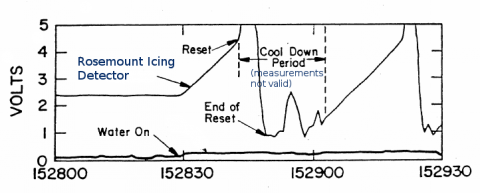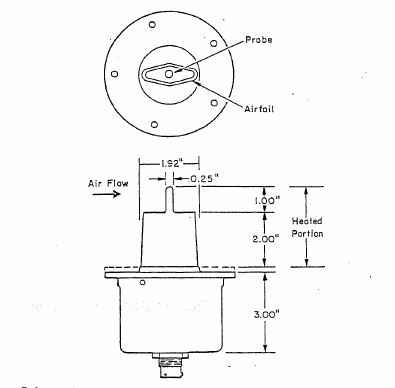Rosemount Icing Detector
-
As ice accumulates on the tip of the sensor, the natural vibration frequency changes and is sensed by a piezoelectric sensor. When accumulated ice exceeds a threshold, the tip is heated to remove the ice. The instrument provides a good (and sensitive) indicator of supercooled water. There have been some attempts to use the results for quantitative measurement, as described in the AlgorithmTechnicalNote and also Cober et al. (1981), referenced below, but such use requires care. These measurements are routinely used instead as a reliable indicator of icing conditions. Studies have shown that there is insignificant response to ice crystals and that in mixed-phase clouds the instrument still responds only to the supercooled water. There have not been systematic studies of this measurement on the GV as yet, and it may behave differently at the higher flight speeds of the GV, so the following entries apply only to the C-130 measurements.
- The following figure shows a schematic diagram of the instrument:
Measurements Provided: Indication of supercooled water and an imprecise measurement of the quantity
Measurement Characteristics:
- Overall estimate of uncertainty: Sensitive to presence of supercooled water at a lower limit of about 0.01 g/m^3.
- Response time: 1 s (typical)
- Precision: unknown
- Other measurement characteristics (comments on signal/noise, bias limits, etc): The instrument will cease to measure supercooled water at the "Ludlam limit" where latent heat released raises the surface of the sensor to above the melting point. This can be at a low liquid water content if the temperature is near freezing. Measurements are also unavailable during the de-icing cycle when the instrument is heated to remove accumulated ice, so these periods must be considered when the data are used.
See the references below. In addition, the following figure illustrates typical response of the instrument to supercooled liquid water content, in this case during a wind-tunnel test:

